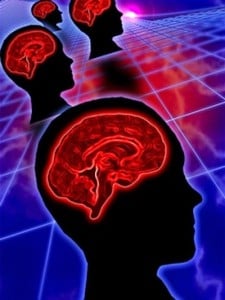
I discovered the power of neurofeedback for reading problems very early. My daughter Lee had reading problems and hated to read. In elementary school, when it was time for that fifteen or twenty minutes of silent reading we all had our children do after they completed their homework, she would scream as if she was being beaten! At that time, she was still reading little kids books, but the first Harry Potter book had come out. I would set her up for her neurofeedback session and say to her, "Now put the book away," and she would dutifully stuff it between the chair and her leg. I would leave the room to tend to another person and, unbeknownst to me, she would pick up the book and read while she was doing neurofeedback. She became a little “reading monster” and we nicknamed her “Nose In a Book”. She even read The Odyssey for pleasure.
That is how I figured out that reading during neurofeedback could be very effective. What happens when a person reads while doing neurofeedback is their brain is being rewarded for engagement and for improved function in the very areas that are needed for effective decoding, reading, comprehension, memory storage, and retrieval. As a result of this experience with my daughter, I learned that having people read while doing neurofeedback is a very effective way of improving reading.
 One of the boys I have worked with also hated to read. It was summer and the usual pattern was for mom to nag him about his summer reading and force him to read. He would choose the shortest possible books on the summer reading list. After some neurofeedback, shockingly, he cleaned his room one day, all by himself without being told, and got it all organized. He also decided that he was going to read THIRTY books for the summer. He was in fourth grade at the time. As the summer went on he kept racking up those books. By the end of the summer he had indeed read thirty books. He got the award for the most books read in his class.
One of the boys I have worked with also hated to read. It was summer and the usual pattern was for mom to nag him about his summer reading and force him to read. He would choose the shortest possible books on the summer reading list. After some neurofeedback, shockingly, he cleaned his room one day, all by himself without being told, and got it all organized. He also decided that he was going to read THIRTY books for the summer. He was in fourth grade at the time. As the summer went on he kept racking up those books. By the end of the summer he had indeed read thirty books. He got the award for the most books read in his class.I had a nine year old girl with a diagnosis of dyslexia. Over the course of her neurofeedback treatment, she lost her dyslexia diagnosis. That means she no longer qualified for a diagnosis of dyslexia because her dyslexia symptoms disappeared.
Reading, especially reading comprehension, are typical goals set by parents for their children and by adults for themselves. Neurofeedback typically results in a 50 to 80 per cent improvement in reading and reading comprehension. Reading speed also improves along with processing speed in general.
In my experience, there are three possible QEEG signatures for reading problems. One shows problems in the left central area, which is an important location in the language pathway and is an important language center. This signature is consistent with language based learning disabilities and dyslexia. Another signature shows problems in the back of the brain, areas called the parietal (the top of the back) and occipital,(the very back). Deficiencies in these areas are typically associated with functional vision problems, such as tracking, convergence, and acuity.
 Vision trumps everything in the brain. If there is a problem with vision, it will not only be more difficult to read, but it will be difficult for the brain to perform all of the other processing tasks necessary for vision based learning including attention, focus, storage, retrieval, and comprehension.
Vision trumps everything in the brain. If there is a problem with vision, it will not only be more difficult to read, but it will be difficult for the brain to perform all of the other processing tasks necessary for vision based learning including attention, focus, storage, retrieval, and comprehension.I was recently talking to a Behavioral Optometrist I have known for many years. When he sees my clients, he tells them to come back when they have completed their neurofeedback training because "neurofeedback often corrects the functional vision problems."
To be a truly good reader, it is also necessary for the frontal lobes to be working at their best. Frontal lobes are where executive functions, higher order thinking, and memory reside, and therefore are important in interpreting the meaning and nuances of what is being read.
Second image courtesy of Ambro at FreeDigitalPhotos.net
Third image courtesy of Phaitoon at FreeDigitalPhotos.net








